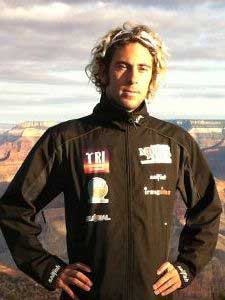Learn by doing! Join our next ironguides The Method training camp in Phuket 2-3 November, 2013 — Clich HERE for more info.
Video from ironguides Phuket Training Camp in 2012
Having lived in South-East Asia for the past six years, I have had the chance to coach people to most of the key events in this part of the world. The Laguna Phuket Triathlon is one of the most popular event among triathletes from all over Asia. Accessed through direct flights that are less than a couple of hours away from several main cities in Asia, this event provides a challenging and fun course, superb accommodation and a breathtaking venue. It is a great weekend, with a mix of hard racing and partying by celebrating the end of the season.
Swim (1.8km)
A beach-run start is always a fun way to begin a race. However, unless you are trying to place in your age group, take this run relatively easy: otherwise you will spike your heart rate and it will take a couple of hundred meters in the water to catch your breath.
The first half of the swim is held in the beautiful waters of Bangtao Beach. There are usually no currents and waves which makes the first part of the swim relatively easy.
Then you run another 100 meters across the beach to dive into the resort’s lagoon. This is a challenge since the ocean water has a higher density than the lagoon (or a swimming pool), so there is a sinking feeling for the first few hundred meters of the next swim section.
You can simulate this change in training with the following swim set:
Choice warm-up
[3x100m hard with the pull buoy – 10sec rest
3x100m hard without pull buoy – 10sec rest
2x100m very easy recovery – 60sec rest]
X2-3 (do the set above two or three times, depending on your experience)
Swimming with a pull buoy helps you float better. It also changes your balance and technique in the water. When you take the pull buoy off and do another several hundred meters of repeats at race-pace effort, you will feel the difference in terms of how high you are in the water—exactly the same way you feel when you switch from the ocean to the lagoon in the Phuket swim!
Bike (55km)
Once done with the swim, the transition is very straightforward and simple. You will be directed to the mounting line. The bike course is well marked and safe (for Thailand’s standards anyways).
The course is mostly flat. You will face the most difficult part not long after T1. From 5km until 12km, you are challenged with three very steep hills—by steep I mean that they are usually ridden in the lightest gear even by world-class professional athletes.
It is very common to see athletes walking while pushing their bikes up these hills. To avoid that, you want to have a large cassette (i.e. 27+) or compact cranks.
In terms of fitness, here are two ways to improve your climbing abilities. The first is by climbing more! If you have access to hills, do hill repeats at a hard effort. If you live in a flat area, you can get stronger by riding in a very low cadence, and doing intense and short repeats. You are basically doing leg presses on the bike. See the set below:
Choice warm-up
10-20x [1min at 40 to 50 cadence HARD RESISTANCE / 1min VERY EASY recovery]
Choice cool-down
Pushing heavier gears will also help you to lower your heart rate after the swim, and on the flat parts of the course. The last 5kilometers of the course are a bit slower, since they go through villages with many switchbacks and turns. If you are a beginner, this will give your legs some rest as you get ready to run. If you are aiming for a top placing, you will need to pay extra attention here as losing focus will cost you time in this part.
Run (12km)
It’s a very straightforward run, mostly on the golf course. The golf course’s undulations are not significant. The only special consideration for this course is the terrain, as the mix of grass and dirt road makes it a bit slower compared with a hard surface.
It is important to focus on a very high stride rate, and to prepare for this we suggest the following set:
Choice warm-up
[1min fast at 96 steps per minute (count one foot only)
4min moderate at 90 steps per minute]
X5-8 (repeat the set 6 to 8 times, depending on your fitness level)
Choice cool-down
Since many Asia-based triathletes live in big cities, make lemonade out of lemons by using the treadmill for the set above because it is an excellent training tool. How does a treadmill contribute so much to improved run skills?
In basic terms, running on a flat treadmill enables you to run at the same aerobic load as you do on land, but to run at a faster pace for that aerobic load. Meaning: You can run faster for longer, which means you are training neuromuscular patterns to fire at a rate that equates to a faster run pace. The aerobic training component in either case is the same.
Running at a high cadence is a very specific triathlon technique that focuses on efficiency. You also want to use a mid-foot strike, which helps to achieve the faster stride rate. Ideally you want to run at 90+ steps per minute (counting one foot only). The above session will challenge you with fast sections at 96 steps per minute.
You also want to get used to aiming for a negative split, which means picking up the effort as you progress into the run.
These tips should give you a good idea for the challenges you will face in Phuket.
Enjoy your training.
Coach Vinnie Santana



 Alun ‘Woody’ Woodward, Certified ironguides Coach – UK/Hungary
Alun ‘Woody’ Woodward, Certified ironguides Coach – UK/Hungary
Recent Comments